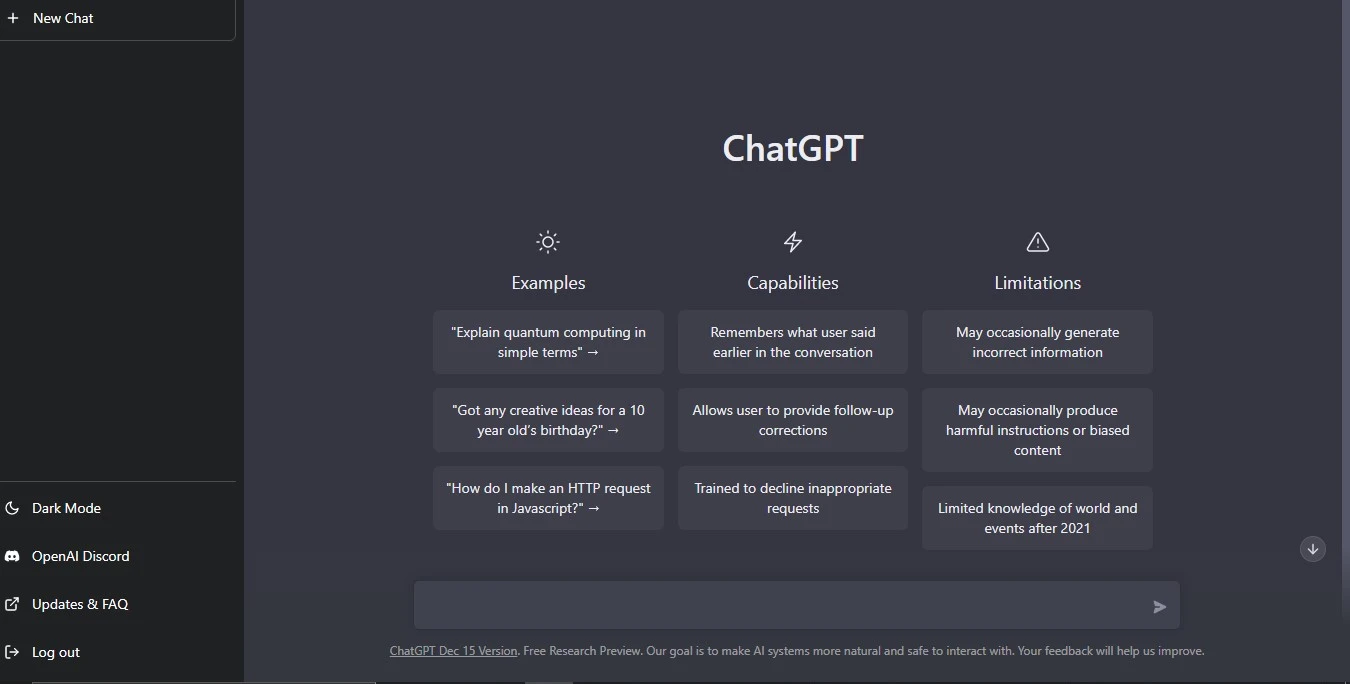The internet is buzzing with a new tech tool: a chatbot called ChatGPT. Many say it has come to replace google, but a school of thought also holds the opposite. In this article, I have tried to explain this newbie in my understanding per research I have done so far. Let’s see it.
First and foremost, what is the GPT acronym this tool carries as a name? Well, GPT stands for Generative Pre-trained Transformer (GPT) and it is a type of language model developed by OpenAI. It is a transformer-based neural network trained using a variant of the masked language model objective.
The GPT model is pre-trained on a large dataset of text and can then be fine-tuned for a specific task such as language translation or question answering. It has achieved state-of-the-art results on a variety of natural language processing tasks and has been widely used in industry and research.
The GPT model is designed to generate human-like text and can be used for a variety of applications such as language translation, language summarization, language generation, and question answering. It has been used to generate text in a variety of styles and formats, including news articles, stories, poems, and code.
GPT is part of a family of models known as transformer-based language models, which have achieved impressive results on a wide range of natural language processing tasks. Other examples include BERT and XLNet.
Now, what is the Chatbot ChatGPT itself? ChatGPT is a variant of the popular language generation model GPT-3 (Generative Pre-training Transformer 3) that has been specifically designed for generating text in a conversational style. It was developed by OpenAI and was released in 2020.
One of the key features of ChatGPT is its ability to generate human-like text in real-time, making it ideal for use in chatbots, customer service applications, and other scenarios where it is important to generate natural-sounding responses quickly. ChatGPT is trained on a large dataset of human conversations and has been designed to generate text that is coherent, contextually appropriate, and engaging.
One of the main benefits of ChatGPT is that it allows developers to create chatbots and other conversational applications with minimal effort. With ChatGPT, it is possible to create a chatbot that can hold a natural conversation with users by simply providing it with a set of prompts and allowing it to generate responses based on those prompts. This can be especially useful for businesses that want to offer customer service or support via chat, as it allows them to provide more personalized and efficient service.
In addition to chatbots, ChatGPT can also be used to generate text for other applications such as social media posts, news articles, and marketing materials. It can even be used to generate responses to specific questions or prompts, making it a useful tool for researchers and students.
Who Owns The ChatGPT?
ChatGPT was developed by OpenAI, a research organization focused on developing artificial intelligence technologies. OpenAI is a private company that was founded in 2015 by a group of high-profile individuals including Elon Musk, Sam Altman, and Greg Brockman. The company is based in San Francisco, California, and is known for its research in the field of artificial intelligence, including the development of language generation models like ChatGPT.
Advantages Of ChatGPT
ChatGPT is a variant of the GPT (Generative Pre-trained Transformer) language model that has been specifically designed for chatbot applications. Some potential advantages of using ChatGPT for chatbot development include:
1. Natural language processing capabilities: ChatGPT has been trained on a large dataset of human-generated text and has the ability to generate human-like responses to user input. This can make it well-suited for chatbot applications that require a high degree of natural language understanding.
2. Customization: ChatGPT can be fine-tuned for specific tasks or domains, allowing developers to tailor the model to the needs of their chatbot application.
3. Efficiency: ChatGPT is able to generate responses quickly, making it well-suited for real-time chatbot applications.
4. Scalability: ChatGPT is a large language model that can handle a wide variety of tasks and can be easily integrated into chatbot applications.
Disadvantages Of Using ChatGPT
ChatGPT is a variant of the GPT (Generative Pre-training Transformer) language model that was specifically designed for use in chatbots and conversational AI systems. It is trained on a large dataset of human-human conversations and is able to generate human-like responses to a given input.
There are a few potential disadvantages to using ChatGPT for chatbot development:
1. Dependence on large amounts of data: ChatGPT is a large and powerful model that requires a significant amount of data to train and fine-tune. This means that it may be difficult to use ChatGPT in situations where there is a limited amount of data available.
2. High computational requirements: ChatGPT is a very computationally intensive model, and running it in production may require specialized hardware and infrastructure. This can make it more expensive to use and maintain compared to smaller, simpler models.
3. Limited context awareness: While ChatGPT is able to generate human-like responses to input, it is not able to retain context or knowledge over the course of a conversation in the same way that a human would. This can limit its ability to have truly natural and engaging conversations.
How To Create an Account On ChatGPT
1. Go to chat.openai.com on your browser on your laptop or mobile.
2. Click the sign up button and create an account by filling in your email and mobile number to receive a verification code
3. Enter the received code into the space provided on the site to log in.
4. Log in and begin the use of the ChatGPT chatbot.
How To Use The ChatGPT Chatbot
To use ChatGPT, you will need to have access to a computer with a web browser and an internet connection. You can interact with ChatGPT by typing your questions or statements into the input field and pressing the “Send” button. ChatGPT will then generate a response based on the information it has been trained on.
Here is a simple example of how you might use ChatGPT:
1. Open a web browser and go to the website where ChatGPT is hosted.
2. Type a question or statement into the input field, such as “What is the weather like today?”
3. Press the “Send” button to send your message to ChatGPT.
4. ChatGPT will generate a response based on the information it has been trained on, such as “I’m sorry, I don’t have access to current weather information. I can only provide general knowledge on a variety of topics.”

Note that ChatGPT is a machine-learning model, so it may not always generate responses that are accurate or appropriate. It is important to use ChatGPT responsibly and to recognize that it is not a replacement for human interaction.
OpenAI is a research institute that focuses on developing and promoting friendly artificial intelligence (AI) in a way that benefits humanity. OpenAI was founded in 2015 by a group of entrepreneurs, researchers, and philanthropists, including Elon Musk and Sam Altman, with the goal of advancing AI in a responsible and positive direction.
OpenAI conducts research in a variety of areas related to artificial intelligence, including machine learning, robotics, and economics. The organization also hosts events and workshops and provides resources and tools for researchers and developers working in AI.
OpenAI is a research institute that operates as a for-profit company. However, the organization has a non-profit arm, the OpenAI Foundation, which supports its research and development efforts.
OpenAI is funded through a combination of sources, including donations and grants, sponsorships, and partnerships with companies and organizations. The organization has also received funding from individual investors and venture capital firms.
6. Is OpenAI working on creating artificial general intelligence (AGI)?
OpenAI is interested in advancing AI and has conducted research on AGI, but the organization has not stated that it is actively working on creating AGI. OpenAI’s focus is on developing and promoting AI in a way that is beneficial to humanity, and the organization has emphasized the importance of ensuring that AI is developed and used responsibly.







